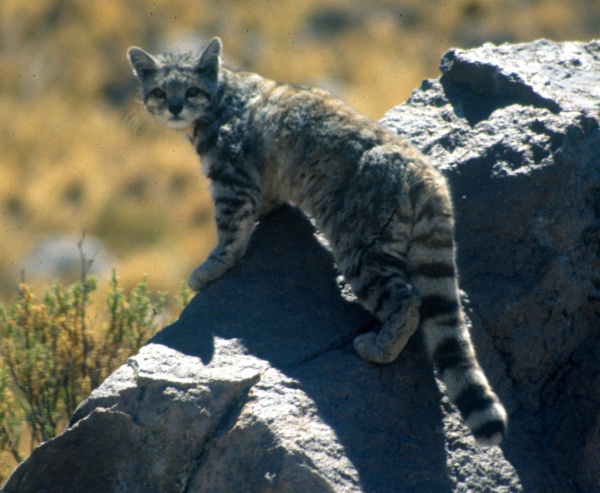Facts About Andean mountain cat
The Andean mountain cat is a small wild feline native to the high Andes and is currently listed as Endangered on the IUCN Red List, with fewer than 2,500 individuals remaining in the wild. This cat is not only ecologically significant but also holds cultural importance for the indigenous Aymara and Quechua peoples, who consider it sacred.
With its ashy-gray fur and unique markings, the Andean mountain cat is easily distinguishable from other species, such as the pampas cat. It prefers the high, arid, rocky, and steep terrains of the Andes, where it thrives.
The Andean mountain cat primarily preys on mountain viscachas and potentially mountain chinchillas. However, it faces competition for these resources from other predators like the pampas cat and puma. The mating season for these cats typically runs from July to August, with females giving birth to one or two kittens in the spring and summer.
Unfortunately, habitat fragmentation and poaching have put the Andean mountain cat at risk, leading to its Endangered status since 2002. To combat these threats, conservation efforts such as the Andean Cat Alliance have been established. This alliance works across the countries where the cat's habitat is found to protect and preserve the species.
Research initiatives, including radio-telemetry studies and conservation agreements, have been crucial in understanding and protecting the Andean mountain cat. Notable contributions from researchers like Jim Sanderson have played a significant role in the conservation and monitoring of this elusive feline.

 Colombia
Colombia